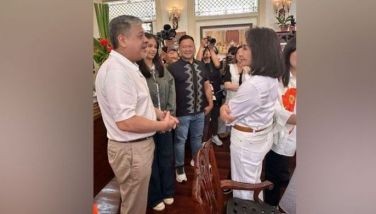The art, science and engineering of being human
MANILA, Philippines - Albert Einstein once wrote that the human mind “always has tried to form for itself a... synoptic (or broad-view) image of the surrounding world.” Art and science – both a form of interrogating and interpreting the surrounding world – share the same ultimate goal of gaining such a broad-view understanding and representation of the world.
Cave art by modern humans (Homo sapiens), spanning from Europe to Asia, goes as far back as 40,000 years, while rudimentary artistic shapes and symbols made by modern humans in Africa date back even further to 100,000 years. Clearly, Homo sapiens have been creating shapes to represent something else – that is, art – for millennia, and the degree of man’s ability to do so, reflecting how well he could create useful representations of his surrounding world in his own mind, has closely correlated with the advancement of the human condition through time.
The contribution of language – a system of spoken and/or written symbols – in man’s creation of cognitive models of the world has certainly been just as prodigious as that by art, if not immensely more. It is intriguingly noteworthy that the emergence of art and language, both symbolic instruments of representation and expression by modern humans, took place at approximately the same time, about 100,000 years ago, and both have since developed and continually reached pinnacles of sophistication practically as a synchronous tandem.
Indeed, art and language – or the skills and abilities involved in making or using them – form the subterranean bedrock of modern science. Art and science, specifically, both share the same modus operandi of interrogating nature, observing and capturing her responses through nuanced observations, and fitting and integrating those responses into a larger and continually refined and expanding paradigm of the surrounding world.
Engineering, meanwhile, stands on the shoulders of both art and science. Not content with merely gaining a broad-view understanding of the world and how it works, engineering goes several steps farther by using that synoptic paradigm of the world as the basis for tweaking and designing things with the cumulative and inexorable outcome of changing and even transforming the surrounding world. Quite simply for engineers, to understand the world is to re-create it.
Thus, art, science and engineering are not mere professions; they are our very human means of gaining a broad-view understanding and representation of our world. They are an inherent part of what makes us human. And, having helped make us human, they powerfully grant to us the ability and the audacity – and, one hopes, also the proper wisdom – both to re-create and co-create our world.
Dr. Joel L. Cuello is a professor of Biosystems Engineering at the University of Arizona and a member of the Philippine-American Academy of Science and Engineering. He lives in Tucson, Arizona.
- Latest


























